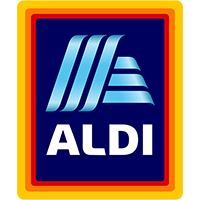Explore the essentials of API Specification on WNPL's glossary page. Learn how it streamlines collaboration and boosts software integration.
An API (Application Programming Interface) specification is a document that outlines how the API should operate, serving as a blueprint for both the creation of the API itself and for the developers who will use it. It details the functional behavior, inputs, outputs, and the structure of requests and responses. This specification is crucial for ensuring that different software applications can communicate effectively, making it a foundational component of modern software development.
Definition
At its core, an API specification is a comprehensive guide designed to facilitate understanding and working with an API. It includes the rules, routines, protocols, and tools needed to build and integrate software applications. API specifications are often written in a format that can be understood both by humans and machines, such as OpenAPI (formerly Swagger), RAML, and API Blueprint. These formats allow for the generation of interactive documentation, client SDKs, and even server stubs in various programming languages.
Key Components of an API Specification
An effective API specification includes several key components:
- Endpoints: The specific paths or URLs where the API can be accessed.
- Methods: The HTTP methods (GET, POST, PUT, DELETE, etc.) that define the types of operations that can be performed on each endpoint.
- Parameters: Detailed descriptions of the parameters that can be included in requests, including path parameters, query parameters, and header parameters.
- Request and Response Bodies: The structure of the data that can be sent to and received from the API, often described using JSON or XML format.
- Status Codes: The HTTP status codes that can be returned by the API, indicating success, failure, or errors in processing a request.
- Authentication and Authorization: Descriptions of how users or applications authenticate with the API and what permissions are required to access different endpoints.
The Role of API Specification in Development
The specification plays a critical role throughout the API lifecycle, from design and development to testing and integration. It acts as a contract between the API providers and consumers, ensuring consistency and understanding. For developers, it reduces the guesswork in integrating with an API, as they can rely on the specification to understand exactly how the API behaves. For API designers, the specification serves as a roadmap, guiding the development process and ensuring that the final product meets the intended design goals.
Best Practices for Writing API Specifications
- Start with the User in Mind: Consider the needs and experiences of the developers who will use your API. The specification should be clear, concise, and organized logically.
- Use Consistent Naming Conventions: Consistency in naming endpoints, parameters, and methods helps users understand and remember how to use your API.
- Include Examples: Real-world examples of requests and responses can greatly aid understanding, especially for complex operations.
- Version Your API: Make sure that changes to the API are versioned properly to avoid breaking existing integrations.
- Leverage Tools: Tools like Swagger Editor, Postman, and Apigee offer functionalities to design, test, and document APIs based on their specifications.
Real-life examples of API specifications include the Twitter API, which allows developers to access Twitter's functionalities like tweeting or retrieving tweets, and the Google Maps API, enabling the integration of maps and location-based services into third-party applications. These specifications detail how developers can leverage the platforms' capabilities, specifying the required parameters, the format of requests and responses, and the authentication methods needed to secure access.
FAQs
How does an API specification facilitate frontend and backend team collaboration?
An API specification acts as a contract between frontend and backend teams, detailing exactly how the API will behave, the data it will accept, and the responses it will return. This clarity is crucial for several reasons:
- Alignment on Expectations: It ensures both teams work towards a common goal with a clear understanding of what is to be achieved. Frontend developers know the data structure to expect and can mock these responses for development and testing, even before the backend is fully implemented.
- Parallel Development: With a detailed API specification, frontend and backend teams can work simultaneously. The frontend team can use tools like Swagger or Postman to mock the API responses based on the specification. This parallel development streamlines the project timeline, as frontend developers don't have to wait for the backend to be completed.
- Reduced Miscommunication: The specification minimizes the back-and-forth communication often required to clarify API behaviors, significantly reducing the potential for misunderstandings and errors. It serves as a single source of truth that both teams can refer to.
- Efficiency in Integration: When it's time to integrate the frontend with the backend, the process is smoother because both sides have been developed with the same expectations in mind. The specification can also include test cases that can be automated, ensuring that the integration meets the agreed-upon standards.
Can API specifications be used to generate code or documentation automatically?
Yes, API specifications, especially when written in formats like OpenAPI, can be used to generate both client-side and server-side code, as well as comprehensive documentation, automatically. This automation offers several benefits:
- Rapid Prototyping: Tools like Swagger Codegen or OpenAPI Generator can create boilerplate code for server stubs and client libraries in various programming languages. This allows developers to quickly bootstrap new projects and focus on implementing the unique business logic rather than setting up basic CRUD operations.
- Up-to-Date Documentation: Automated documentation tools, such as Swagger UI or Redoc, parse the API specification and generate interactive documentation that is always aligned with the latest version of the API. This documentation can be incredibly helpful for onboarding new developers or for API consumers who need to understand how to integrate with the API.
- Consistency Across Services: When working in a microservices architecture, ensuring consistency across various services can be challenging. Automatic code generation from a standardized API specification helps maintain consistency in how APIs are exposed and consumed across the service landscape.
- Enhanced Developer Experience: The interactive documentation generated from an API specification allows developers to make API calls directly from the browser, facilitating testing and exploration of the API without the need for a separate client application.
What are the differences between OpenAPI, RAML, and Swagger specifications?
- OpenAPI: Formerly known as Swagger, OpenAPI is a widely adopted specification for describing RESTful APIs. It offers a rich set of features for defining endpoints, parameters, responses, and much more. OpenAPI specifications can be written in both YAML and JSON formats, making them both human-readable and machine-processable. The OpenAPI Initiative, under the Linux Foundation, oversees its development, ensuring it remains a community-driven open standard.
- RAML (RESTful API Modeling Language): RAML is designed to manage the whole API lifecycle from design to sharing. It's more focused on modeling the API, which makes it particularly useful for designing APIs with a clear structure. RAML is YAML-based, emphasizing readability and documentation. However, it's not as widely adopted as OpenAPI for code generation and tooling support.
- Swagger: Initially, Swagger referred to the entire ecosystem around the Swagger specification, including the specification itself, the Swagger UI documentation, and the Swagger Codegen. After the Swagger specification was donated to the OpenAPI Initiative, the term "Swagger" now primarily refers to the tooling that supports the OpenAPI specification. The Swagger suite of tools includes Swagger Editor, Swagger UI, and Swagger Codegen, among others.
How can WNPL assist in creating or optimizing our API specifications to enhance our application development process?
WNPL, with its expertise in API development and consultancy services, can significantly assist in creating or optimizing API specifications through several avenues:
- Consultation and Strategy: WNPL can help identify the business needs and technical requirements that the API must fulfill. This includes advising on best practices for API design, versioning strategies, and security considerations.
- Specification Writing: Leveraging their experience with industry standards like OpenAPI, WNPL's experts can draft comprehensive API specifications that are clear, concise, and ready for implementation. This process includes defining resources, methods, parameters, and responses in a way that aligns with the business logic and user needs.
- Tool Integration: WNPL can assist in integrating tools that automate the generation of documentation and code from the API specification. This includes setting up Swagger UI for documentation and utilizing code generation tools to bootstrap development.
- Quality Assurance and Testing: By creating detailed API specifications, WNPL can also help implement automated testing strategies that ensure the API meets the specified requirements. This can include integration testing, load testing, and security testing to ensure the API is robust and secure.
- Training and Workshops: To ensure that your team is up to speed with the best practices in API specification and development, WNPL can provide tailored training sessions and workshops. This education can cover writing specifications, using API design tools, and implementing security best practices.
Further Reading references
- "Designing APIs with Swagger and OpenAPI"
- Authors: Josh Ponelat and Lukas Rosenstock
- Publisher: Manning Publications
- Year Published: 2020
- Comment: This book is a practical guide for anyone looking to understand the intricacies of API specification using Swagger and OpenAPI, ideal for developers and architects.
- "RESTful API Design"
- Author: Matthias Biehl
- Publisher: Self-published
- Year Published: 2015
- Comment: Biehl's book dives deep into the principles of RESTful API design, making it a great resource for developers aiming to create well-structured APIs.
- "APIs: A Strategy Guide"
- Authors: Daniel Jacobson, Greg Brail, and Dan Woods
- Publisher: O'Reilly Media
- Year Published: 2011
- Comment: Offers strategic insights into the role of APIs in business and technology, providing valuable context for why and how to create effective API specifications.
- OpenAPI Specification (OAS) Official Documentation
- URL: https://www.openapis.org/
- Comment: The definitive guide for the OpenAPI Specification, essential for anyone working on API design and specification.
- "Microservice Architecture: Aligning Principles, Practices, and Culture"
- Authors: Irakli Nadareishvili, Ronnie Mitra, Matt McLarty, and Mike Amundsen
- Publisher: O'Reilly Media
- Year Published: 2016
- Comment: Provides insights into how API specifications fit within microservices architectures, useful for architects and developers.










